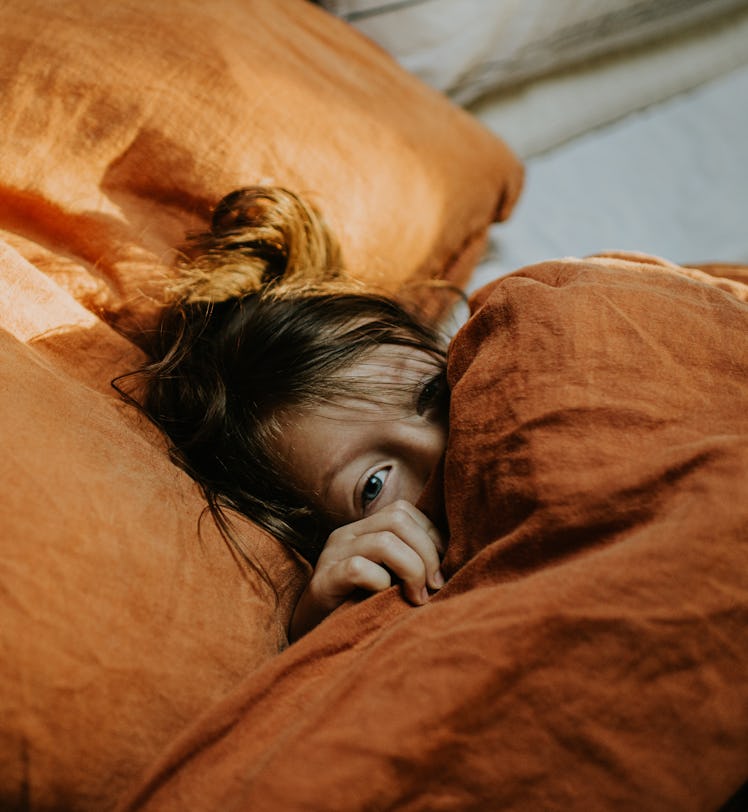How Monsters Under The Bed Became A Common Childhood Fear
It’s an oddly universal fear — and it likely has its roots deep in human evolution.

Your children are afraid of the dark, and they’re certain that there are monsters under the bed. It’s not because of horror films. It’s not because their friends have told them tales of ghouls and ghosts. It’s because the dark is scary, and monsters do exist.
“It’s no surprise that infants have some fear of the dark. Throughout our evolutionary history, the dark was dangerous,” says Peter Gray, Ph.D., a psychology professor at Boston College who has written about children’s innate fears. Humans rely on vision above all other senses, Gray explains, and the dark placed us in acute danger for thousands of years. It follows that a healthy fear of the dark, and the monsters that prowl at night, is deeply ingrained in the human psyche.
“Monsters represent predators. Lions and tigers, and the sort of slimy monsters like snakes — to me, it’s not surprising that we would have a natural fear of these kinds of things,” Gray says.
Humans are born with a handful of innate fears, all evolutionary boons. From birth, we’re afraid of falling from great heights and afraid of loud noises; shortly thereafter, we acquire fear of snakes and spiders. Among our earliest learned fears (and, perhaps, our innate fears) is the fear of the dark. “Is it present right away from birth? I’m not sure,” Gray says. “But it’s certainly present by a few months. Fear of being left alone in the dark is adaptive, right from the beginning.”
At nightfall, Gray says, we instinctively want to be tucked away in a cave or bedroom, surrounded by other people who might help us fend off an attack when our senses are at their worst. This is probably why small children cry when they’re left alone in a dark room. “Over the course of natural selection, infants who expressed fear of being left alone and manifested that fear by crying out and calling their caretakers to them were more likely to survive,” he says.
But why are children specifically afraid of monsters hiding under their beds or in their closets? Gray is unsure, but suggests a simple explanation. “My guess would be that the monster could be any place where you can’t see,” he says. “You go into your bedroom, look around, and there are no monsters in sight. You turn off the light— and you realize there are a few places you didn’t check.”
But it’s not all evolution — there is some nurture mixed in with the nature. Gray suspects the specific types of monsters that children fear, for instance, are less a product of our evolutionary history and more a product of our popular culture. “I would imagine the basic fear is innate, but the specific forms of the fear would probably be influenced by experience,” he says. “The kinds of monsters you’ve read about in stories or seen on television may predominate in the child’s imagination.”
Here’s the problem: Children are afraid of monsters under the bed — and that’s, essentially, a good thing. It’s adaptive, an evolutionary boon. So how is a parent to cope?
Gray personally advocates co-sleeping with scared children. Although he acknowledges that pediatricians warn against co-sleeping, which has been linked to sudden infant death syndrome due to smothering, Gray maintains that healthy parents sleeping alongside healthy children are at minimal risk.
“In almost every case, the parent was intoxicated,” Gray says. “If you are drunk or drugged, it’s not a good idea to sleep with your child.” Otherwise, Gray argues, it makes little sense to force children to overcome their adaptive fear of the dark. “I am personally persuaded by the evidence that the best solution is co-sleeping with your child,” he says.
“If your child is afraid of going to bed alone at night — don’t put your child to bed alone at night.”
This article was originally published on